
Mitsubishi Outlander PHEV Review

Introduction
The original Outlander PHEV was, at risk of sounding cliche, a trailblazer. The first mainstream plug-in hybrid SUV, it pioneered the market and became an instant sales success, quickly becoming Britain’s most popular plug-in car. But that was back in 2014 and times have changed. Today, a raft of new plug-in hybrids have come to steal the Outlander’s crown, so the Mitsubishi has had to evolve. Sharpened road manners and a modernised image have helped it keep up with the pack.
Review Sections
Select's rating score* - 3.3 / 5
At a Glance
The Outlander sits at the cheaper end of the plug-in hybrid SUV pantheon, but it comes with plenty of premium features. Not only does its powertrain make it a refined and economical drive, but its space and practicality make it a serene and solid family companion. Admittedly, the entry-level Verve doesn’t come with that much equipment, but it isn’t a bad starting point; the only real miss is the lack of a touchscreen. That’s rectified in every other model, though, with 8.8-inch screens dominating the cabins. Heated seats, two-zone climate control and the Android Auto and Apple CarPlay smartphone integration systems make life much easier. And when you get to the top of the range, you really are getting lots of toys, including a heated steering wheel, reversing camera and bags of safety kit.
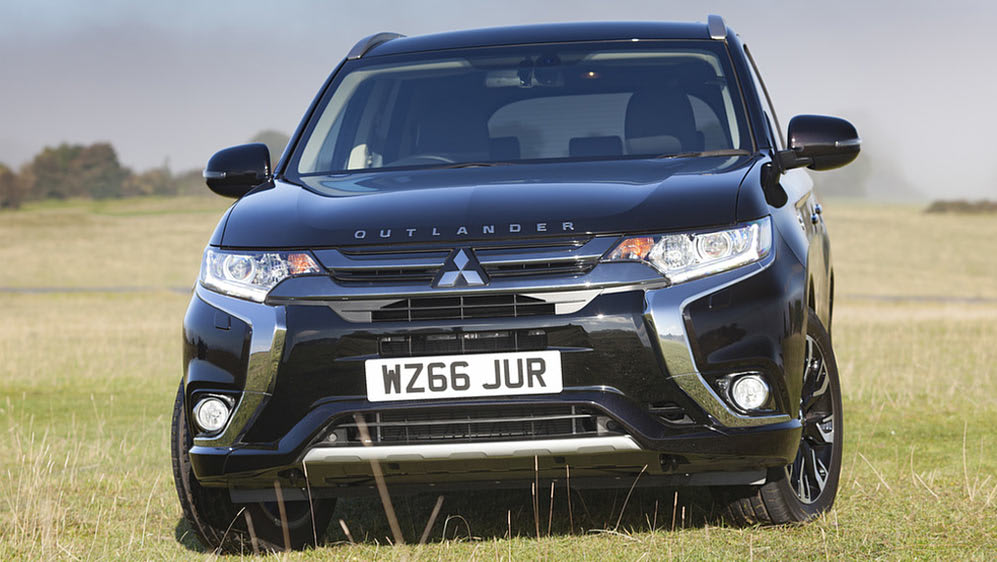
Key Features
Once upon a time, the Outlander PHEV could trade solely on its revolutionary powertrain, its tax benefits and the SUV body shape, but not any longer. Fortunately, it backs all those features up with the usual attributes found among the Mitsubishi line-up. The cabin is solidly built, with tried and tested parts that will stand up to the punishment of family life, and there’s a fair amount of kit even on base-spec cars. Push-button engine start is included, and you get clever dashboard graphics that show you exactly how the hybrid system is working. You’ll also find paddles behind the steering wheel that allow you to adjust the regenerative braking, effectively letting you tune how the car will coast to a stop.
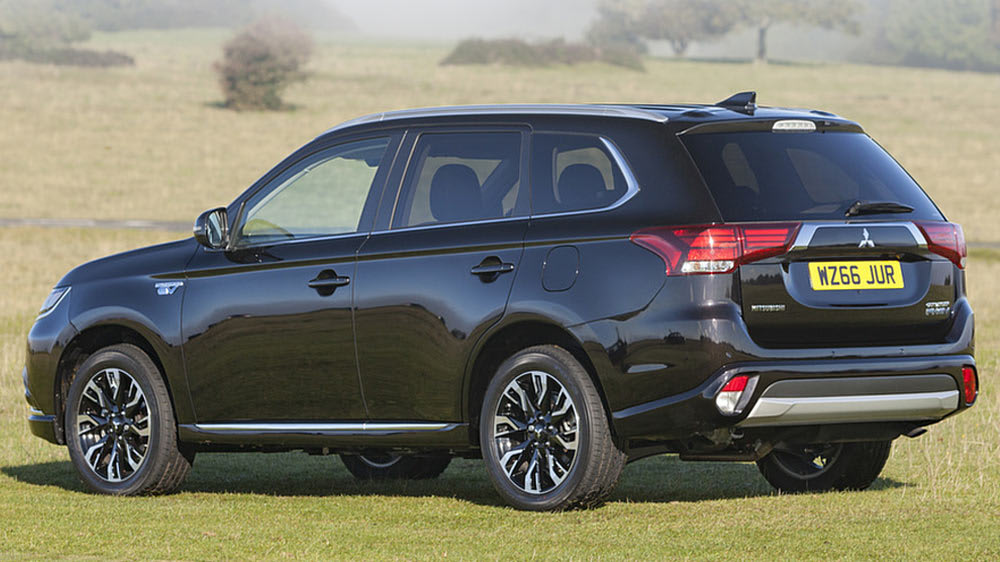
Performance & Drive
For those uninitiated in the world of plug-in hybrids, the concept is fairly simple. Like most cars, they have a petrol or diesel engine under the bonnet, but they also have one or more electric motors and a battery pack – just like an electric car. That means they can run on petrol, electricity or a mix of the two, allowing zero-emission motoring around town and the range of an internal combustion engine on longer drives.
In the case of the Outlander PHEV, a 2.4-litre petrol engine is combined with two electric motors – one on each axle – to provide four-wheel-drive capability. Paired with a 13.8kWh battery, the combination allows an all-electric range of about 28 miles, after which the petrol engine will take over. Put your foot down, however, and the two will combine to propel you from 0-62mph in 10.5 seconds.
Not that the Outlander is sporty in any way. That 0-62mph time is respectable, rather than riotous, and that’s a good metaphor for the way this car drives. The 2018 update saw the car become less slack than before, with sharper steering and better response from the controls, but it’s still a big, heavy family SUV.
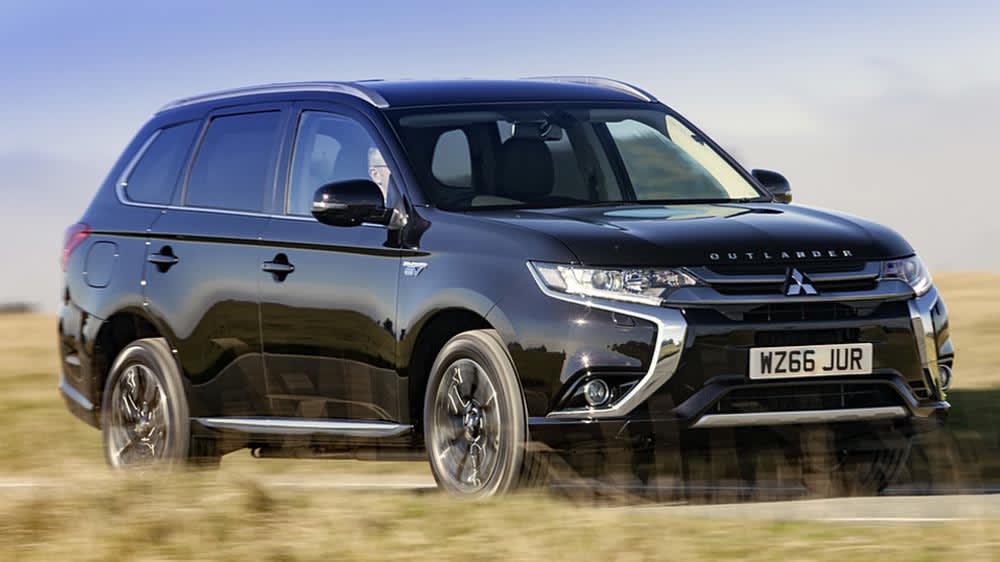
As such, it has a greater emphasis on comfort than handling, and it’s all the better for that. The ride is supple, although the sheer weight of the car can make it feel a bit lumpen, and the drive is quite refined – particularly on electric power. Visibility isn’t bad, either, and although you sit fairly high above the road, a decent driving position means you don’t feel as though you’re perched behind the wheel.
Those new to plug-in hybrid motoring will probably be happy to learn the hybrid system doesn’t take much management, with a simple auto mode that lets the car decide which motor is most efficient for each given situation. But if you must take charge, there’s a setting to keep the battery topped up by using the petrol engine, and another setting that allows you to use electrical power alone until the battery runs flat. And, if you want to get really clever, you can adjust the amount of charge that goes to the battery when you’re coasting to a halt. Higher settings will see you stop faster but charge the battery more, while lower settings let you coast further and charge less.
If you want to go off-road, the hybrid system will also help out. The electric all-wheel-drive system uses the rear-axle motor to drive the back wheels while the front motor and petrol engine look after things at the other end. Ground clearance is decent without being amazing, so the car is quite happy crossing muddy fields, farm tracks and snowy streets, and it’ll even wade through 400mm of water, but it’s no Land Rover Defender. Truly serious off-roading is best left to Mitsubishi’s Shogun Sport 4x4 or the L200 pick-up truck on which it is based.
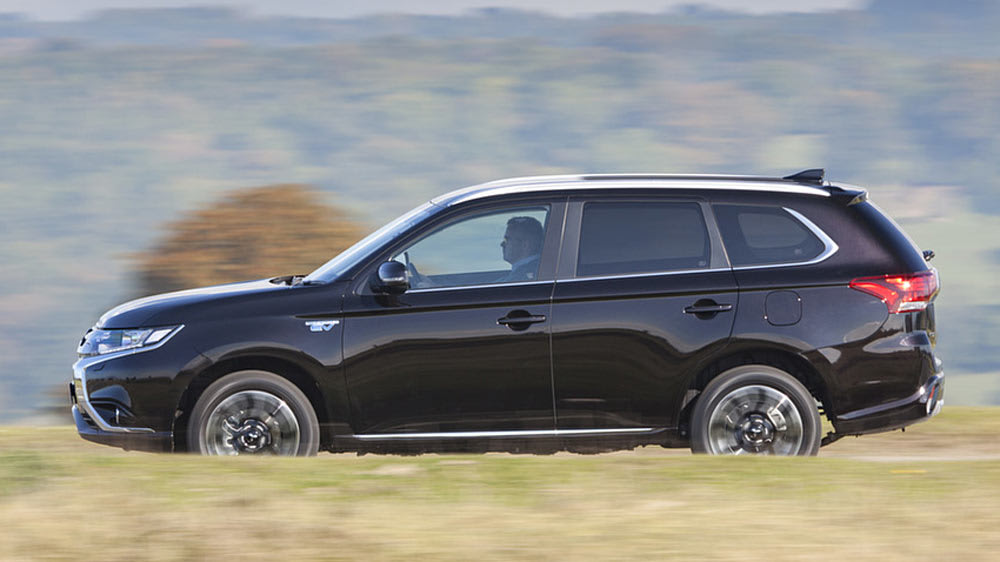
Running Costs
As with any car, fuel economy is reliant on how you drive, but that’s particularly true of plug-in hybrids. Officially, the Outlander PHEV will return 139.7mpg, but that depends on your mileage and how you drive. If you mainly do short journeys and charge regularly you’ll barely burn any petrol at all, but if you don’t charge often or only do long journeys, you’ll get nowhere near the claimed economy. These cars suit a particular lifestyle very well, but if you’re regularly driving long distances, you might be better off with a diesel.

Because carbon dioxide emissions impact the environment, tax rates and very little else, the Outlander PHEV remains a popular choice among company car drivers. Officially, it pumps out 46g of carbon dioxide per kilometre, meaning HMRC will demand 14% in company car tax. In contrast, the petrol-powered Outlander will manage 196g/km, equating to a 37% company car tax bill.
Interior
While hardly as revolutionary as the powertrain once was, the Outlander comes with a very solid, practical interior. Admittedly, some of the materials feel a little too solid, but the switchgear is generally good and you get the distinct impression it’ll stand the test of time without complaint. Unfortunately, though, it isn’t the most modern design in the world, and although the glossy plastic dashboard trims attempt to inject some brightness and joie de vivre, there’s still a slightly utilitarian look. Yet it’s comfortable and spacious, with smart upholstery and a surprising level of light – even with the dark roof lining.
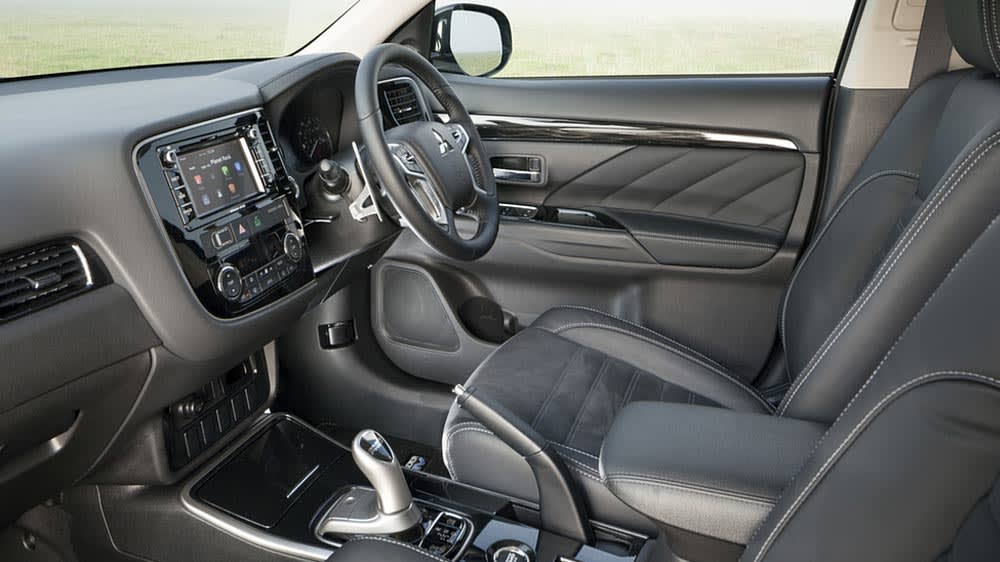
All but the basic Verve models come with an eight-inch touchscreen infotainment system that houses most of the Outlander’s on-board tech. Like the rest of the cabin, it isn’t the most modern system in the world, but it’s relatively straightforward to use and that’s an underrated quality these days. Big menu buttons allow you to navigate with ease, taking you all the way to the Apple CarPlay and Android Auto systems. Because let’s be honest, once you’ve got those up and running, you’ll seldom use the car’s own satellite navigation system.
You might use the reversing camera that’s offered on almost every model, though, and that’s less impressive. It works fine, but the image isn’t the sharpest and it gets a bit grimy on wintry roads. Which is a shame when partner company Mercedes-Benz is producing some of the best manoeuvring cameras you can get.
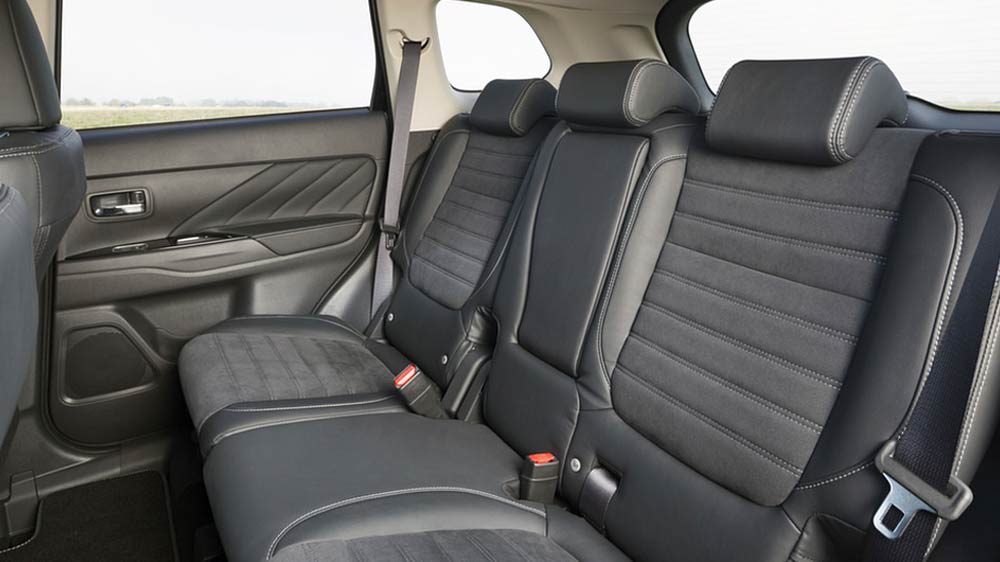
Practicality & Boot Space
Thanks to its true SUV shape, the Outlander comes with bags of interior space. Not only will it seat four adults in relative comfort, but there’s also a big boot – even with the hybrid gubbins hidden under the boot floor. Admittedly, that means there’s no chance to have seven seats, but you still get a very usable five-seat 4x4. Total boot space stands at 463 litres with all five seats in place, and that’s more than enough for most eventualities. It’s certainly more than you’ll get in a Nissan Qashqai.
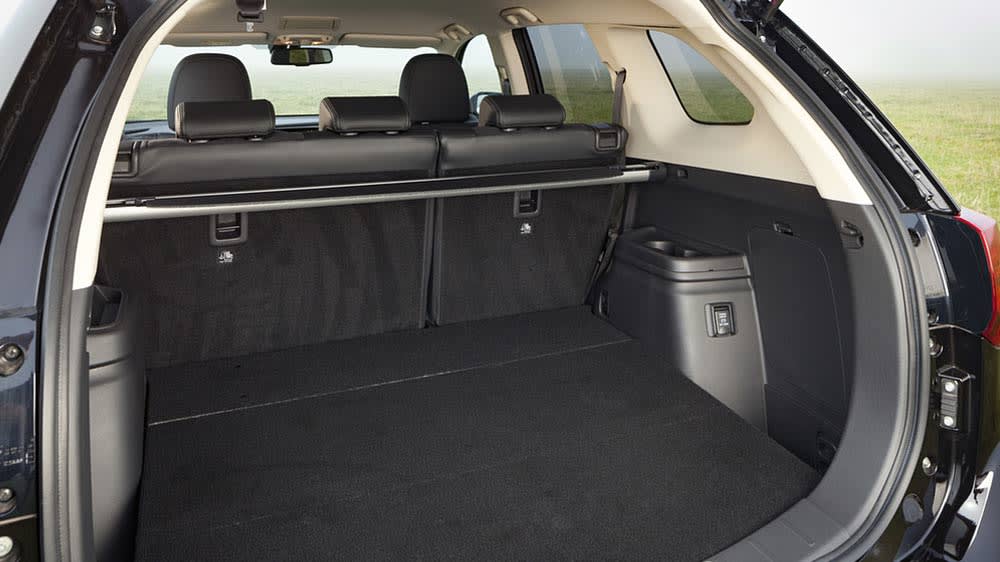
In addition to that capacious luggage bay, the Outlander gets plenty of other places to hide the rubbish that accumulates in your car over time. Higher-spec vehicles get a special holder for your shades, while there’s a handy charging cable storage tray under the boot floor. You get a decent glove box, too, and a big central storage bin between the two front seats. Big door pockets and a little tray in front of the gear lever make it even easier to store your stuff.
Safety
The Outlander PHEV was last crash tested after its launch in 2013, when it received a full five-star rating. Admittedly, both the test and the car have changed slightly since then, but the basic principles of both remain the same. The car is based on similar underpinnings, so you can rest assured it’ll offer you good protection should the worst happen.
And if you go for the Safety package available on higher-end cars, you get plenty of gizmos to prevent things going that far. High-end Dynamic and Exceed models are available with Safety packs that come with autonomous emergency braking designed to brake automatically if the car detects an impending collision, and lane departure warning. Front and rear parking sensors designed to reduce low-speed mishaps are also included.
Options
The Outlander PHEV range is based on four trim levels, rising from the entry-level Verve to the top-end Exceed. Each comes with the same 2.4-litre plug-in hybrid powertrain, but some have noticeably more luxurious interiors than others.
Basic Verve models come with 16-inch alloy wheels, heated front seats and rear parking sensors – all of which sound pretty good – but they miss out on leather upholstery or a touchscreen infotainment system. Cruise control, two-zone climate control and ‘keyless’ push-button ignition aren’t to be sniffed at, though.
Further up the range, the Design model gets 18-inch alloy wheels and an eight-inch colour touchscreen with the Android Auto and Apple CarPlay smartphone pairing software. The rear parking sensors vanish, however, but they’re replaced by a rear-view camera.
Climbing higher still brings you to the Dynamic model, which gets leather seats, black roof lining and a power-adjustable driver’s seat. If you want parking sensors, though, you’ll have to opt for the Safety pack, which gets front and rear sensors, as well as a range of safety gadgets.
Finally, the range is crowned by the Exceed version, which boasts diamond-quilted leather, satellite navigation and a 360-degree manoeuvring camera. There’s also a heated steering wheel, as well as a powered tailgate and twin USB sockets in the rear armrest. Like the Dynamic, the Exceed can also be fitted with the Safety pack, adding much the same array of gadgets.
Once you’ve chosen your trim level, it’s more or less a case of choosing a paint job and taking delivery of the car. The options list is small, comprising mainly dealer-fitted extras such as mud guards and mats, and the colour palette is fairly limited, too. For the most part, it’s a choice between various blacks, greys and whites, although there’s a rich Diamond Red for those wanting something slightly brighter.
Who Rivals The Mitsubishi Outlander PHEV?
Where the Outlander once stood more or less alone in its field, the Mitsubishi has been joined by a host of rivals – some of which come from much more aristocratic stock. So alongside the mainstream rivals, such as the plug-in Peugeot 5008, Vauxhall Grandland X Hybrid4 and the plug-in hybrid Seat Tarraco, the Outlander is competing with some seriously premium products. BMW, for example, has put a plug-in powertrain in its X3, and you can have a plug-in hybrid Audi Q5, too. Mercedes-Benz and Jaguar are adopting plug-in hybrid power, too, as is Jaguar’s sister company Land Rover.
In fairness, few of these cars combine the Mitsubishi’s ruggedness and off-road credentials with its affordability. Arguably the best competitor, though, is the plug-in hybrid Volvo XC60, which offers a more premium feel and comes with plenty of off-road capability. It has a higher list price, but strong residual values keep lease rates competitive, and you get plenty of equipment and style for your money. It’s comfy, too, and surprisingly fast, while the oh-so Scandinavian cabin makes it feel properly special.
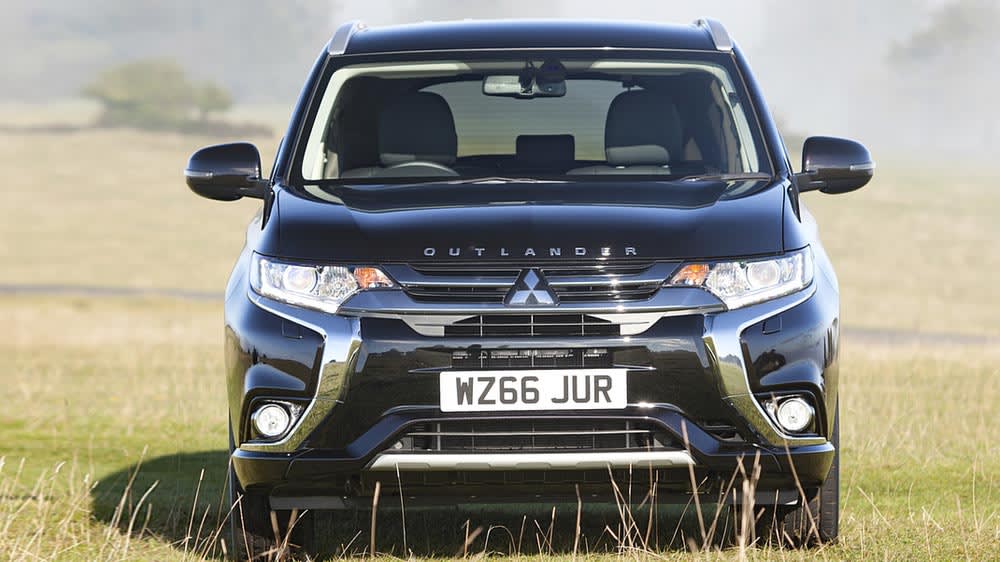
Verdict & Next Steps
Although the Outlander has enjoyed a long stint at the head of the plug-in hybrid field, it has been caught and overtaken by a fleet of more advanced models. That said, a range of updates throughout its life has kept the Outlander competitive, and it still has the honour of being the trendsetter – the car that put plug-in hybrids in the public consciousness. And if your lifestyle suits the powertrain, you’ll find the Outlander a quiet, reliable companion for the duration of your lease.
Where to next?
View latest Mitsubishi Outlander PHEV leasing deals - from £350.78 per month inc VAT**
Looking for a great leasing deal? Check out our incredible range of Special Offers
New luxury SUV? Read our latest Car Reviews and find the right model for you
Want to know more about leasing? Take a look at our comprehensive Leasing Guides
Interested in everything motoring? Why not catch up on all the latest Car Leasing News.
*Score based on Select’s unique meta score analysis, taking into account the UK’s top five leading independent car website reviews of the Mitsubishi Outlander PHEV
**Correct as of 28/01/2021. Based on 9 months initial payment, 5,000 miles over a 48 month lease. Initial payment equivalent to 9 monthly payments or £3,157.06 Ts and Cs apply. Credit is subject to status.















